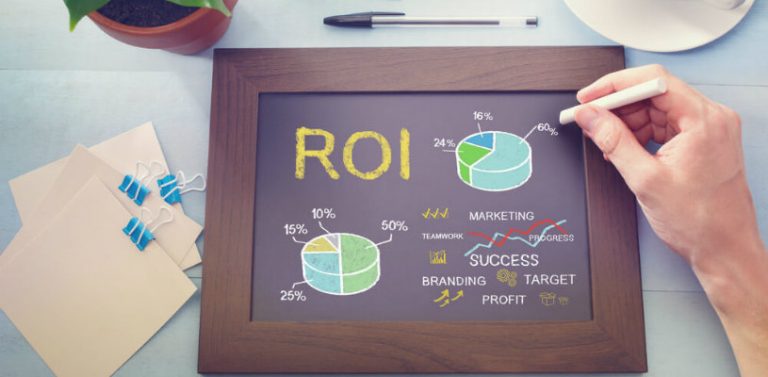09.21.18
By Lisa Major

Trade shows are a highly effective way to promote brands, however, exhibiting at a trade show can be costly. Therefore, it is critical for exhibitors to have a clear understanding of what their goals are and how they can maximize their results to get the most bang for their buck. In this week’s Happy Hour, we share with you a step by step guide on how exhibitors can improve their trade show ROI. We also take a look at the evolution of event technology, a checklist for experiential creative development, and the different types of consumer audiences you typically find at brand activations. We close with an article that provides examples of non-profits using experiential strategies to elevate their marketing efforts.
“To make sure your trade show return on investment contributes to the success of your overall marketing program, align your trade show goals and objectives with your organization’s wider sales and marketing goals such as generating sales, building brand awareness and nurturing key partner relationships.” ~Eric Dyson
 In any type of experiential or event marketing, the campaign is only as good as the results it brings. This goes for trade shows, too. One of the top priorities for trade show marketers should be setting up actionable goals to measure and maximize results. But, as this article points out, “20% of event marketers do not possess a clear understanding of how to properly track or measure their trade show ROI.” If you feel like you might be in that 20%, fear not, this step-by-step guide will walk you through the three most important areas of trade show ROI.
In any type of experiential or event marketing, the campaign is only as good as the results it brings. This goes for trade shows, too. One of the top priorities for trade show marketers should be setting up actionable goals to measure and maximize results. But, as this article points out, “20% of event marketers do not possess a clear understanding of how to properly track or measure their trade show ROI.” If you feel like you might be in that 20%, fear not, this step-by-step guide will walk you through the three most important areas of trade show ROI.
“Creatives must have plenty of freedom for exploration…to a degree.” ~SoHo Experiential
 When planning and designing an experiential marketing campaign, keep in mind that you have one chance to make a first impression. That’s it. This is why every aspect of the campaign is important to think about, especially in the creative development stage. And while it’s easy to get caught up in the latest trends, recent campaigns, and so forth, it’s just as easy to stray off course and lose focus during the planning phase. SoHo Experiential outlines five things to ask yourself during the creative phase that will help keep you on track.
When planning and designing an experiential marketing campaign, keep in mind that you have one chance to make a first impression. That’s it. This is why every aspect of the campaign is important to think about, especially in the creative development stage. And while it’s easy to get caught up in the latest trends, recent campaigns, and so forth, it’s just as easy to stray off course and lose focus during the planning phase. SoHo Experiential outlines five things to ask yourself during the creative phase that will help keep you on track.
“It is quite valid to state that each new idea with experiential marketing technology tries to outdo the last while still building on the experiences of what has gone before.” ~LamasaTech
 Technology has always been used in events to some degree, however, in recent years, we’ve seen technology take the events industry to a new level, especially when it comes to audience engagement and data collection. For each new idea that comes along, an even newer one pops up that tries to outdo the last one. From 3D printers to augmented reality, technology has elevated the experiential marketing industry in ways we never dreamed of 15 years ago. Here, we take a look at a few game-changers in the evolution of experiential technology.
Technology has always been used in events to some degree, however, in recent years, we’ve seen technology take the events industry to a new level, especially when it comes to audience engagement and data collection. For each new idea that comes along, an even newer one pops up that tries to outdo the last one. From 3D printers to augmented reality, technology has elevated the experiential marketing industry in ways we never dreamed of 15 years ago. Here, we take a look at a few game-changers in the evolution of experiential technology.
“Irrespective of their leading trends, all individuals your brand will interact with are going to be potential customers.” ~TechGen YZ
 As we have mentioned before, experiential marketing is not a one-size-fits-all approach. What works for one audience may not work for another. Different consumer audiences respond differently to campaigns and strategies. For example, a street team promotion may flourish in one city setting, but flop in a different city. Therefore, it is very important to determine who you want to target and research your audience thoroughly to best engage with them and get the most return on your investment. This article by TechGen YZ categorizes the three basic consumer types found at experiential marketing activations based on their spending habits and behavior and offers tips on how to maximize engagement with each.
As we have mentioned before, experiential marketing is not a one-size-fits-all approach. What works for one audience may not work for another. Different consumer audiences respond differently to campaigns and strategies. For example, a street team promotion may flourish in one city setting, but flop in a different city. Therefore, it is very important to determine who you want to target and research your audience thoroughly to best engage with them and get the most return on your investment. This article by TechGen YZ categorizes the three basic consumer types found at experiential marketing activations based on their spending habits and behavior and offers tips on how to maximize engagement with each.
“Experience marketing doesn’t have to be a one-off gesture. Think about the brand experience you want to give your audience at each touch point. This includes fundraising events, content consumption, and marketing interceptions.” ~dio
 We’ve seen the power of experiential marketing for B2B and B2C companies, but what about nonprofits? Nonprofits can reap the benefits just as much, and maybe even more. There is no better way to trigger an emotional response from people than by pairing a nonprofit, which already has an emotional story to tell, with experiential, which is an emotion-based strategy. Experiential allows organizations to connect on a personal level, it stirs up feelings and evokes powerful emotions that make people want to act. Read on to see how five leading non-profits used experiential marketing to benefit their organizations.
We’ve seen the power of experiential marketing for B2B and B2C companies, but what about nonprofits? Nonprofits can reap the benefits just as much, and maybe even more. There is no better way to trigger an emotional response from people than by pairing a nonprofit, which already has an emotional story to tell, with experiential, which is an emotion-based strategy. Experiential allows organizations to connect on a personal level, it stirs up feelings and evokes powerful emotions that make people want to act. Read on to see how five leading non-profits used experiential marketing to benefit their organizations.
Join us each week for Happy Hour when we take a look at the latest news, trends, and tips in experiential and event marketing. Cheers!
ATN Event Staffing is one of the pioneering event marketing staffing agencies. For more than 15 years, we have provided our clients with top-notch staffing solutions and superb customer service. See what some of our clients have to say.